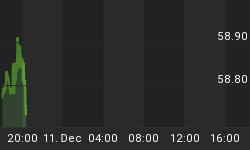11/23/2010 9:02:54 AM
A mixed close resulted from bullish optimism over semiconductors with continued selling of financials worldwide as the ECB readies to bailout Ireland while concerns remain over required bailouts for Portugal and Spain...
Recommendation:
Take no action.
Daily Trend Indications:

- Positions indicated as Green are Long positions and those indicated as Red are short positions.
- The State of the Market is used to determine how you should trade. A trending market can ignore support and resistance levels and maintain its direction longer than most traders think it will.
- The BIAS is used to determine how aggressive or defensive you should be with a position. If the BIAS is Bullish but the market is in a Trading state, you might enter a short trade to take advantage of a reversal off of resistance. The BIAS tells you to exit that trade on "weaker" signals than you might otherwise trade on as the market is predisposed to move in the direction of BIAS.
- At Risk is generally neutral represented by "-". When it is "Bullish" or "Bearish" it warns of a potential change in the BIAS.
- The Moving Averages are noted as they are important signposts used by the Chartists community in determining the relative health of the markets.
Current ETF positions are:
In cash.
Daily Trading Action
The major index ETFs opened lower and then promptly moved in opposite directions. A zest for Tech in the first fifteen minutes created upward pressure immediately on semiconductors and the NASDAQ-100 while financials swooned resulting in steep selling pressure on the Dow. The S&P-500 stabilized in the opening minutes and was actually able to move modestly higher with the NASDAQ-100. All the major indexes were supported as a rising tide lifted all boats until shortly after 10:00am when the buying stopped and sellers took over. Downward pressure remained on the major indexes until the end of the lunch hour when an uninterrupted move higher began. The While the major indexes closed out moving higher into the close, there was a little sputtering in the final hour of trading such that neither the Dow nor the S&P-500 managed positive closes while the NASDAQ-100 closed most of one percent higher on the day. Only the Dow finished below its 200-Day Moving Average (DMA) as the dichotomy between believers in the promise in semiconductors contrasted with the fear for financials. The Semiconductor Index (SOX 391.33 +4.24) gained +1.1% while the Russell-2000 (IWM 72.80 +0.35) posted a gain of one half of one percent. The bank indexes were mixed with the Bank Index (KBE 22.49 -0.39) lost most of two percent while the Regional Bank Index (KRE 22.88 -0.14) posted a fractional loss. The 20+ Yr Bonds (TLT 97.00 +0.41) posted a fractional gain. NYSE volume was quite light with 886M shares traded. NASDAQ volume was below average with 1.832B shares traded.
There were no economic reports of interest released. Instead, the focus was on Ireland and the aftermath of a potential deal to sustain Ireland as it works through its massive debts.
The U.S. dollar had an overnight low down 0.7% and peaked up 0.4% during the session before finishing up 0.2%. With Ireland finally asking for aid for the European Central Bank (ECB) and the International Monetary Fund (IMF), the amount is estimated at around EUR 100B. With the idea that stability could finally be achieved for Ireland, the focus became Spain and Portugal and risk aversion saw investors seeking out the dollar versus the Euro.
HealthCare was unchanged and Tech (+0.6%), Consumer Discretionary (+0.3%), Utilities (+0.2%) and Materials (+0.2%) moved higher. The other five out of ten economic sectors of the S&P-500 moved lower led by Financials (-1.4%).
Implied volatility for the S&P-500 (VIX 18.37 +0.33) rose most of two percent while the implied volatility for the NASDAQ-100 (VXN 19.73 -0.05) was nearly unchanged.
The yield for the 10-year note fell seven basis points to close at 2.81. The price of the near term futures contract for a barrel of crude oil fell twenty-four cents to close at $81.74.
Market internals were mixed with advancers leading decliners by one percent on the NYSE and by three percent on the NASDAQ. Down volume led up volume by 3:2 on the NYSE while up volume led down volume by nearly 2:1 on the NASDAQ. The index put/call ratio rose 0.44 to close at 1.21. The equity put/call ratio was nearly unchanged falling 0.01 to close at 0.57.
Commentary:
Monday's volume lightened as is somewhat expected in the Thanksgiving holiday week. The largest sector in the S&P-500 prevented losses from being too extreme as Tech continued to be an area of interest. Still, there was no getting around the lack of desire for financials as investors continue to lighten up to their exposure amid continued worries about required sovereign bailouts in Europe. We remain in a delicate state with the major indexes sitting near and on either side of their respective 20-DMAs. The NASDAQ-100, Russell-2000, and Semiconductor Indexes have outperformed on a relative basis while the Bank Indexes continue to underperform. The long-term bonds (TLT) continue to rally and opened on the 200-DMA but finished below that important level. Generally, equities move opposite in direction to long term bonds so a close above that level would be noteworthy.
Again, the most significant factor moving the stock market has been the U.S. dollar, which moved modestly higher as risk aversion causes investors to flee to the Dollar as a safe haven. We continue to believe that the market could muddle about here for a bit, looking for a modest move lower early in the week only to move higher yet again on light holiday trading volume late in the week. We will remain in cash for now but we are willing to take a position when we see an advantage in doing so.
We hope you have enjoyed this edition of the McMillan portfolio. You may send comments to mark@stockbarometer.com.















